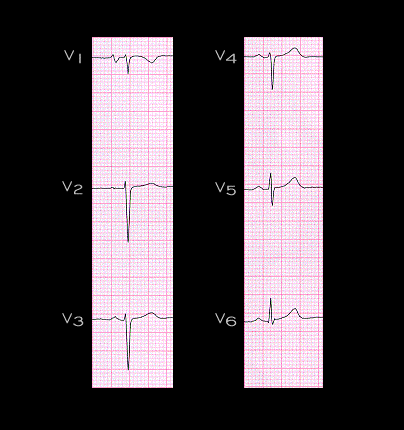
The electrocardiogram shown here illustrates small R waves in leads V1-V4. It is from a 64 year old patient with no evidence of coronary artery disease. The wave form illustrated in the tracing is referred to as “poor R wave progression” and can be attributed to any of several causes including a prior anterior wall myocardial infarction.
